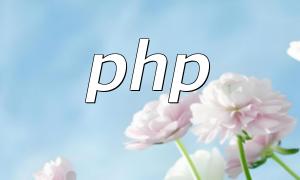With the continuous evolution of internet technology, developers face more choices when selecting the right programming language. JavaScript and PHP are two widely used languages today, but the application scope and influence of JavaScript are expanding rapidly, making it one of the mainstream development languages. This article explores why JavaScript shows superiority over PHP in multiple aspects and what this shift means for developers.
JavaScript initially served as the main tool for dynamic front-end interactions but has evolved to support server-side programming, especially driven by Node.js, achieving seamless integration of front-end and back-end development. This unified language environment greatly improves development efficiency and makes project management and collaboration more convenient.
More and more companies and developers are adopting the full-stack development model, choosing JavaScript as a unified language to simplify the technology stack complexity. This approach not only reduces learning costs but also promotes effective communication and collaboration within teams, improving overall project development speed and quality.
JavaScript benefits from an active and large community, rich open-source resources, and mature frameworks like React, Angular, and Vue, providing developers with comprehensive development tools and solutions. In contrast, PHP’s ecosystem is relatively limited, with slower framework updates and fewer options, restricting its innovation and growth speed.
Although PHP still holds an important position in traditional website development, it has shortcomings in handling high concurrency and performance optimization. As modern applications demand faster response times and greater stability, PHP’s technical bottlenecks have become more apparent, leading more projects to shift toward JavaScript platforms.
Looking ahead, with increasing demand for real-time interaction and high performance, JavaScript, due to its flexibility and adaptability, will play a key role in more fields. The rise of serverless architectures and cloud computing environments also provides greater opportunities for JavaScript application expansion.
In summary, JavaScript, with its full-stack advantages, strong ecosystem, and technical flexibility, is gradually becoming the preferred language for developers. Although PHP still has its value, the future development trend clearly favors JavaScript. For developers, mastering JavaScript will be a vital guarantee to maintain competitiveness and adapt to future growth.









